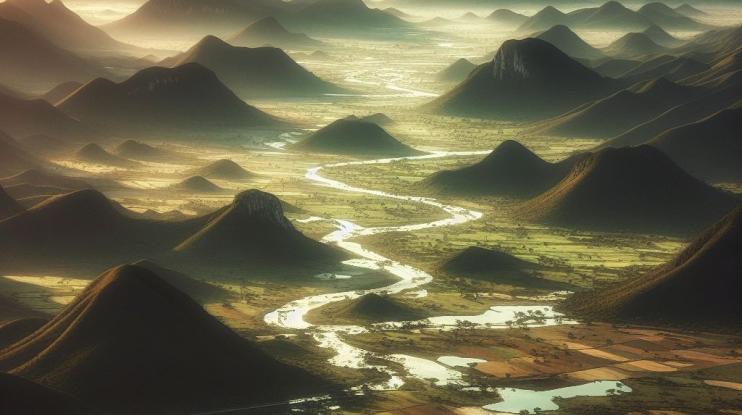The Marsh, Part I
At first, the highest lake in those mountains was a liquid mirror that reflected the sky. Its waters were nourished by the streams that descended singing from the Hill of the Bearded Trees. Veins of water ran quickly, jumping over the branches. Dozens of small rivers flowed through the Cerro de los Hummingbirds, and small mirrors of water from the Cerro de las Tripas de Jaguar bathed the meadows. Silver threads filled the mountains of the Wind with joy and streams, which descended argünderos.
But it was the birds who most adorned this celestial mirror, for their song, for their colors, and because thousands of them came in search of the fish, frogs and leeches that were abundant; They chased insects, caterpillars and butterflies of all colors. The birds also looked for the small fruits and honey from the little flowers.
At night, the reflection of Kukulkan in the water and the valley illuminated by seas of fireflies created a magical spectacle. Giant moths, dressed in mourning, fluttered alongside thousands of spotted moths. The night opened like a jaguar's mouth, and the deafening songs of the frogs and toads echoed; The bats whistled after the mayflies, and the owls hooted in the cold.
El Peje de Oro was a place where fish jumped with shiny scales like gold. It was full of eyes of water and gelatinous fields that vibrated. The cicadas hummed among the tules and the pajón grass.
A frozen river flowed from Cerro del Gato, and strands of bubbling liquid mixed with the water of Cerro de la Cruz. In Almolonga, a geyser roared, watering the romerillos and like emeralds, tiny little frogs called calates jumped like green sparks.
The winged visits of the Amazon painted the basin with an indescribable multicolor. The most colorful songs came from the gray birds, and the hummingbirds were like arrows of light.
Clouds of herons landed and whitened the fields. The ancient oaks were painted blue by the jeshes and their song of soch. Flocks of swallows entered the air, leaving trails of movement and mystery.
This was the Marsh, a place where nature wove its own poem, and each creature had its role in this symphony of life
The Marsh, Part II
EGO
Cham Bo', that is what the Eleven Mayans call the Sick Lagoon, in the Coleto dialect. Since the arrival of the first settlers, it was already a temporary lake that flooded the area annually. They call the Huitepek mountain Volcán de Agua, because every rainy season it seemed to explode, giving rise to the most fertile and viscous wetland in the west.
The first inhabitants settled in the highlands of the northern mountains, calling themselves Max bikil. Another group took root in I'k bitz, and small villages of rebels spread around this vast cosmic mirror.
Tsontebits, the progenitor volcano of this basin, formed it millions of years ago. Below its slopes, the first human beings dispersed, searching for their deities among the caves and harvesting beans, cuesa, chili and corn from the earth.
The Tsotsiles, descendants of those lords of the stone houses, men and women who sought refuge in the freedom of the mountains. Children of corn who abandoned ruthless tyrants in the incandescent jungle. Knowing the floods, that is why they never inhabited the valley.
They forgot their goddesses and others arrived, masked as heroes, who built their homes in the heart of the valley. With the first rain, they drowned. The survivors, with dikes and floodgates, began the drying up of the wetlands, and thus, for centuries, a town emerged among the waters.
The Bikiles without deities became wandering spirits among the hills or slaves carrying rocks. Thus began the stone tribute to the valley; Each native gave his tithe of stone, and it was mandatory to carry a quintal of rock when descending to the town.
The beautiful flagstones of the thirteen temples were transported, transforming them into sidewalks and roads. Jade stones adorned the narrow streets of the town of impostor idols. Four and a half centuries later, the magnificent lagoon shrank to two rivers, three streams, and a dozen smaller lakes and swamps.

